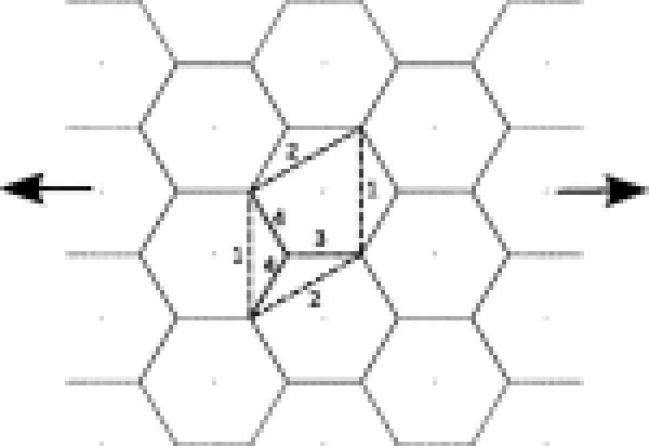Graphene as a hexagonal 2-lattice: Evaluation of the in-plane material constants for the linear theory. A multiscale approach
Sfyris D., Koukaras E.N., Pugno N., Galiotis C., Journal of Applied Physics, 118(7):art. no. 075301 (2015) .
Continuum modeling of free-standing graphene monolayer, viewed as a two dimensional 2-lattice, requires specification of the components of the shift vector that acts as an auxiliary variable. If only in-plane motions are considered, the energy depends on an in-plane strain measure and the shift vector. The assumption of geometrical and material linearity leads to quadratic energy terms with respect to the shift vector, the strain tensor, and their combinations.
Graphene's hexagonal symmetry reduces the number of independent moduli then to four. We evaluate these four material parameters using molecular calculations and the adaptive intermolecular reactive empirical bond order potential and compare them with standard linear elastic constitutive modeling. The results of our calculations show that the predicted values are in reasonable agreement with those obtained solely from our molecular calculations as well as those from the literature.
To the best of our knowledge, this is the first attempt to measure mechanical properties when graphene is modeled as a hexagonal 2-lattice. This work targets at the continuum scale when the insight measurements come from finer scales using atomistic simulations.
